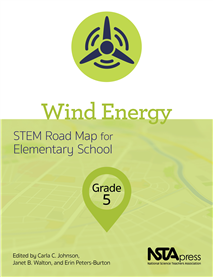All Resources
Book Chapter
In this lesson, students investigate the economics of wind farms, their environmental impacts, and wind turbine blade design. Students consider the advantages and disadvantages of using wind energy, and then use the engineering design process (EDP) a...
Book Chapter
This lesson’s activity is the Wind Farm Challenge. In this lesson, each student team creates a proposal for a wind farm designed to convince the local community that the wind farm is a desirable addition. In its proposal, each student team consider...
Journal Article
PEEP and the Big Wide World is a public television show and website devoted to engaging preschool-aged children in developmentally appropriate science. PEEP’s newest effort is to address the needs of home-based, family childcare educators, who pr...
By Borgna Brunner
Journal Article
The Science Center of Iowa in Des Moines began an on-site preschool shortly after its doors opened in 1970, inspired by the founders’ belief in the importance of science education for early childhood learners. ...
By Amber Forrest, Jolie Pelds, and Renee Harmon
NSTA Press Book
Wind Energy, Grade 5: STEM Road Map for Elementary School
What if you could challenge your fifth graders to develop an economical, eco-friendly wind farm? With this volume in the STEM Road Map Curriculum Series, you can! Wind Energy outlines a journey that will steer your students toward authentic probl...
eBook
Wind Energy, Grade 5: STEM Road Map for Elementary School (e-book)
What if you could challenge your fifth graders to develop an economical, eco-friendly wind farm? With this volume in the STEM Road Map Curriculum Series, you can! Wind Energy outlines a journey that will steer your students toward authentic probl...



